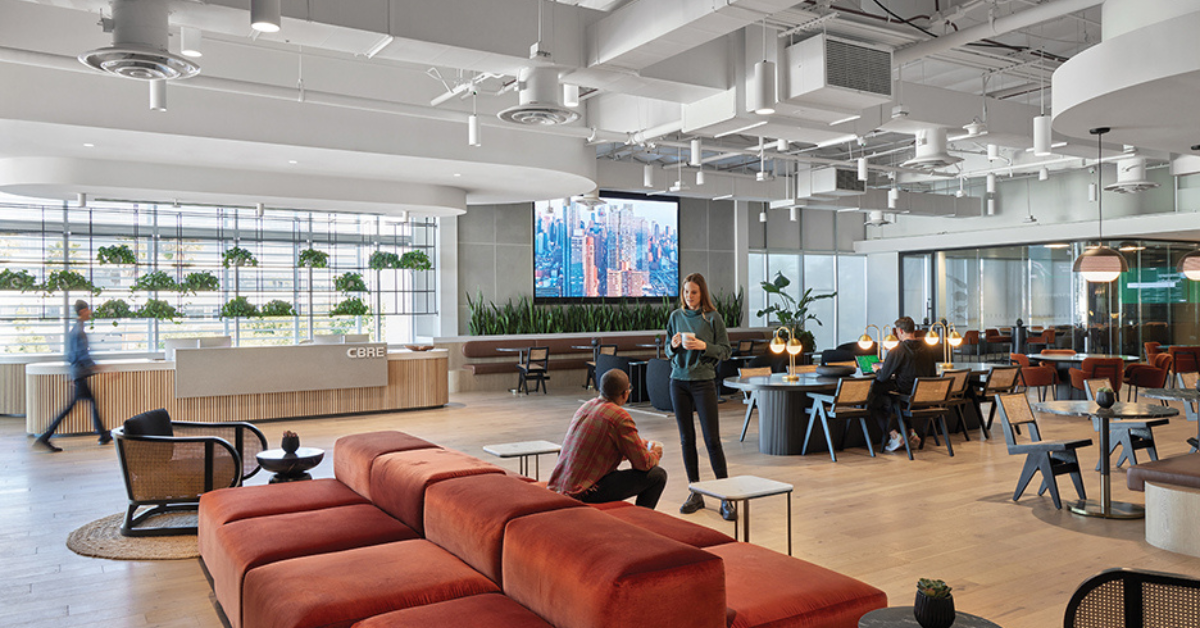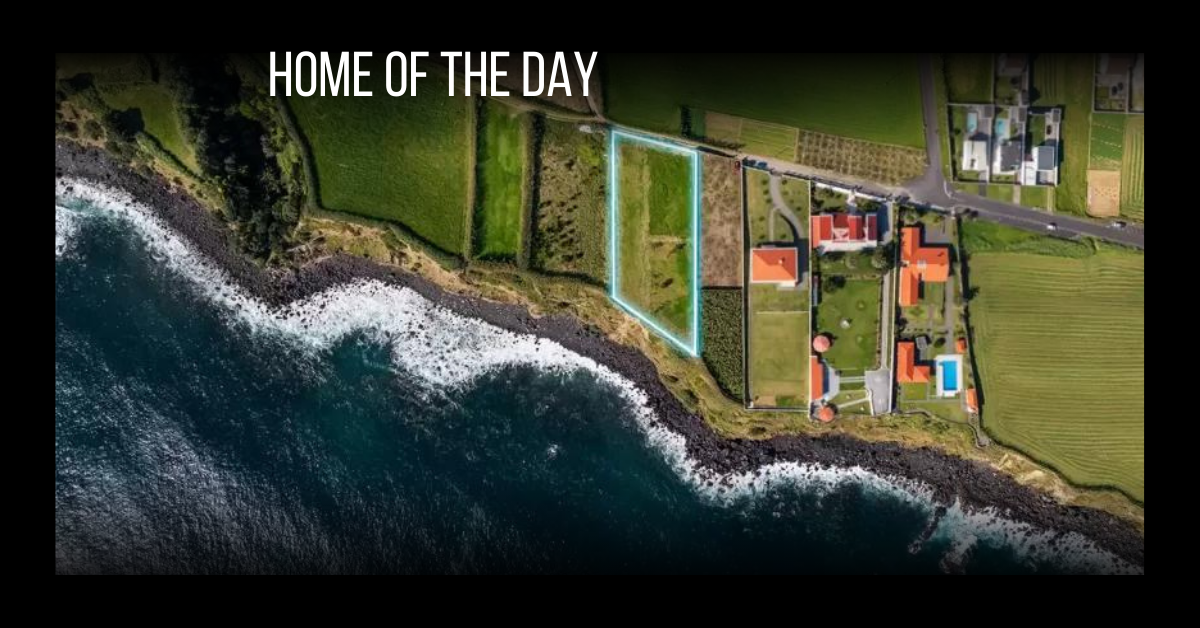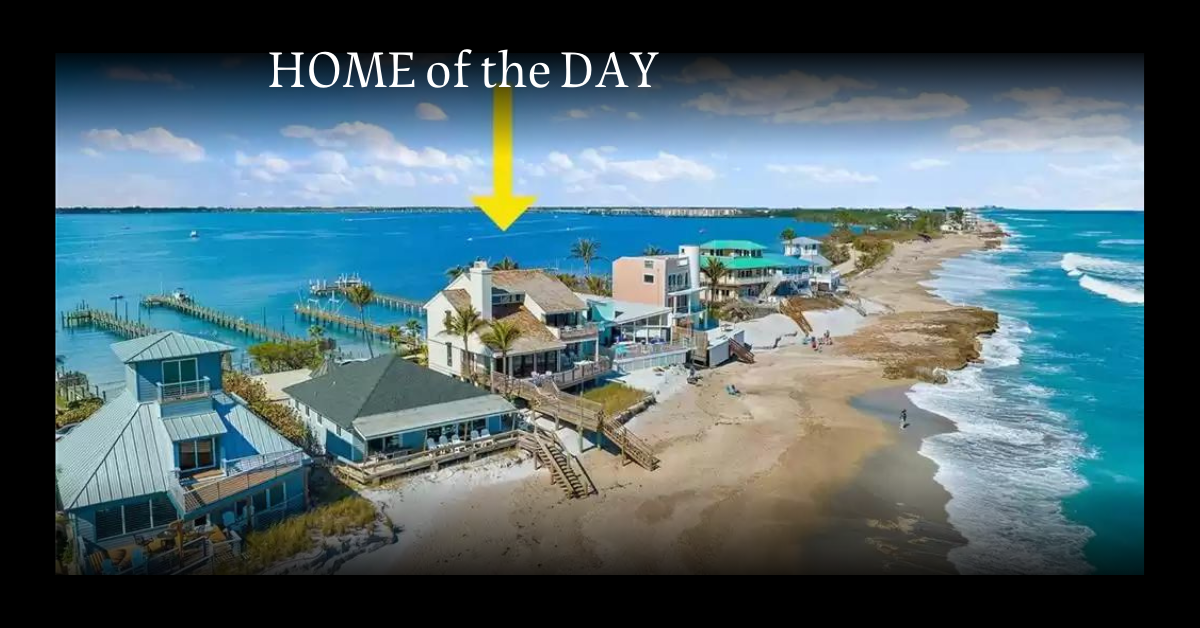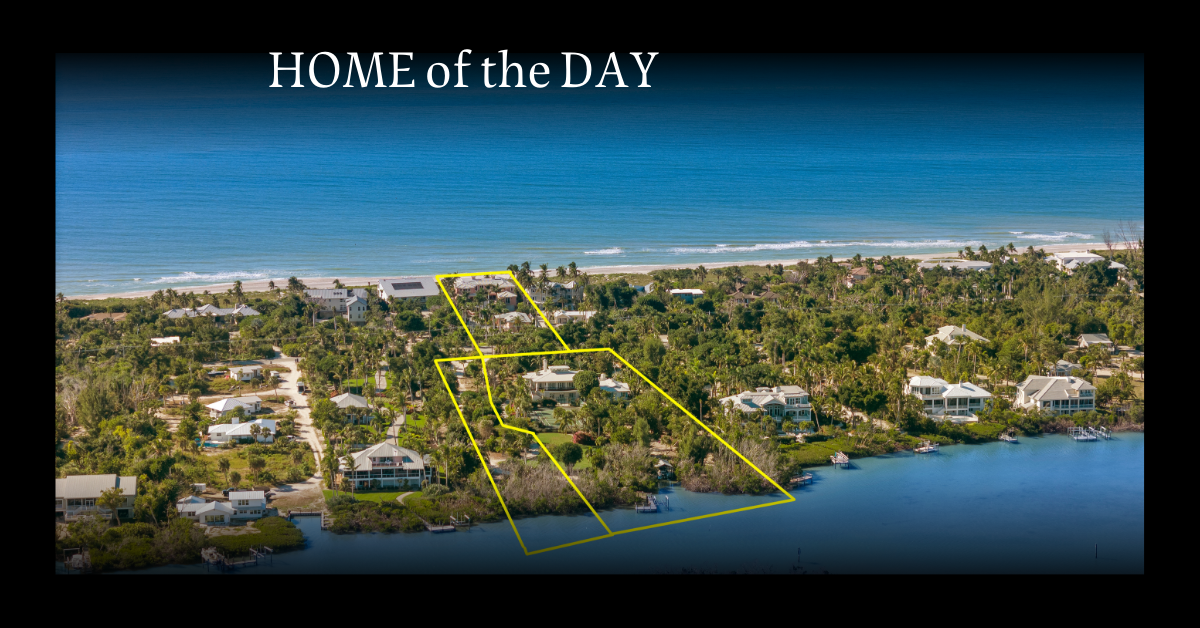Cities today are perched on the brink of a far-reaching transformation that will make tomorrow’s urban center radically different than today.
All over the globe, the groundwork for cities of the future is taking place in what Urban Land Institute and others characterize as “a wave of innovation that is already starting to transform urban areas.” Asia, China, Singapore, Japan and South Korea are all pursuing smart city initiatives, building entire metros from the ground up. Elsewhere, projects might be more modest, limited to a section of a city or addressing specific challenges, but they are no less visionary. In North America, concept cities and neighborhoods are underway in Denver and in Toronto. Atlanta, Miami, San Jose, California; Portland, Oregon, and a growing number of metros are incubating innovative strategies to address traffic, gridlock, energy use, conservation, wellness, connectivity, safety and overall quality of life. On the forefront of all these projects are tech companies, including Sidewalk Labs, a subsidiary of Google’s Alphabet, Panasonic and AT&T, acting as catalysts for change as well as stakeholders.
What cities of the future will look like might still be uncertain, but a growing number of policy makers, government entities and private industries are working to clarify the vision.


Outside of Denver, Peña Station NEXT is beginning to take shape around the last light rail stop before the airport on 400 acres of farmland that developer L.C. Fulenwider Inc., has owned for decades. Initially, the plan for a light rail line connecting the city with the airport did not include a stop at this location, but Fulenwider worked with the city to secure one. “It truly was a public/private partnership,” says Ferd Belz, president of Fulenwider, a 114-year-old Denver company. The plan was to build a transit-oriented development at the site. At the time, Panasonic’s search for a place to construct a new technology center had winnowed down to Denver and another city. The tech company saw the 400 acres at Peña Station as not only an ideal location, but also as a blank canvas to develop, test and create the prototype of a smart city as part of its smart cities initiative.
“It’s a transit-oriented development, so we have all those components of life, work, play and walkability. With Panasonic coming onboard, we’re really trying to utilize technology and look to those that are transformative not only for our inhabitants but for the country and the globe,” says Belz, who sees the community as a “living laboratory.” Almost everything from air quality to ground temperatures and vibrations will be monitored, but most important, as in smart cities overall, will be the ability to process that data, respond to changes and use the information to enhance day-to-day life.

Renderings courtesy of Peña Station Next.
Central swaths of green studded with art, water features, walking and running trails, and bike paths are an essential ingredient designed to create community. Pocket parks, rather than parking or traffic, dominate the overall scheme of Peña Station next in this view. A drone’s eye view also shows extensive integration of solar.
The project builds on experience from the Fujisawa Sustainable Smart Town in Japan, a pioneering community of smart homes that combines energy efficiency, solar power and batteries. Panasonic led development of the Fujisawa microgrid by connecting town buildings to a central real-time energy network, which is critical when managing the demands of renewable tech and real-world needs.
Construction at Peña Station NEXT has been underway for a couple of years, with completion slated for 2026. Already in place is Panasonic’s 112,500-square-foot operations and technology center, along with 1.8 megawatts of solar panels, part of a solar microgrid tied to 1.5 megawatts of battery storage and backup to store excess energy generated when solar gain is high (and then distribute that energy later when solar production slows). National recognition for the Peña grid includes the Environmental Leader 2017 Project of the Year award.
At buildout, there will be approximately 1.5 million square feet of office space, 500,000 square feet of retail and 2,500 residences. Autonomous shuttles will transport residents between offices, residences and the rail stop. In the future, Belz also envisions these shuttles going to other neighborhoods in the area. Currently, Fulenwider is working on plans for an entertainment district as well as a wellness component. This past spring, Colorado developer McWhinney broke ground on a Hyatt Place hotel.
Peña Station also underscores what most experts say is crucial for future urban development: the importance of collaborative relationships that bring together public and private entities along with a myriad of local stakeholders. Energy company Xcel is also participating in the project, along with the city and county of Denver, Denver International Airport and battery storage integrator Younicos.
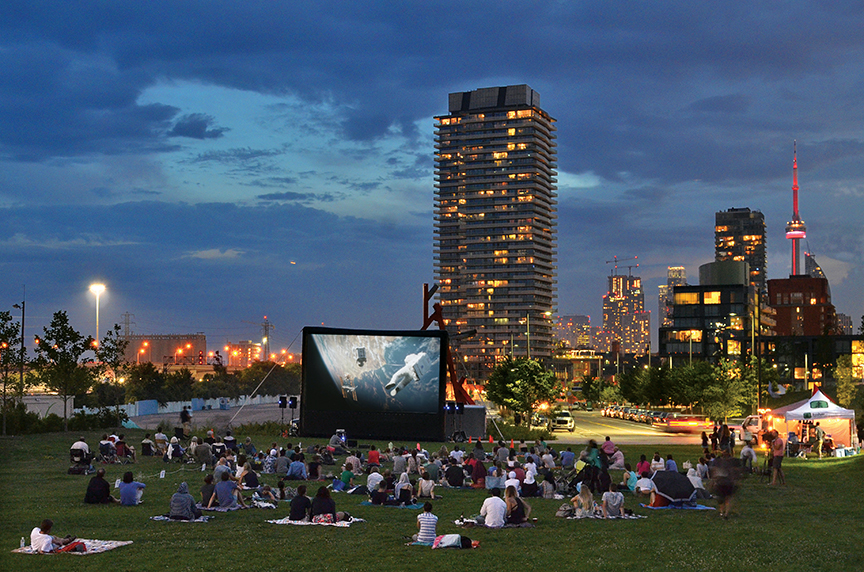
Photo by Nicola Betts.
Giant screens and event lawns bring new uses to urban parks.
Mike Zeto, general manager for AT&T’s Smart Cities and emerging IoT solutions, says the key to change in current cities is the creation of an “ecosystem” of both large technology companies and smaller ones. “From a public/private partnership perspective, you can have a partnership that’s from one company in the city or multiple companies in a city that allows you to pull all the solutions together and then come up with unique ways to fund them, whether by each company participating or by the city being able to take some of that data and being able to monetize that data that’s anonymous and aggregated,” Zeto adds.
LED streetlights are essential to Peña’s infrastructure, and LEDs with a digital component — including controls, cameras and an array of sensors — are becoming the backbone of smart urban networks. For cities looking to transition to the future, Zeto says, most “are starting with lighting, because that is the one thing that is ubiquitous across the city.” Vertical infrastructure is top priority because it saves money, increases efficiency and promotes safety. Second is intelligent transportation systems and traffic, and, Zeto says, water conservation is the third focus for cities.
How intelligent lighting is employed also underscores the utility of the Internet of Things. In Atlanta, for example, AT&T Smart Cities partnered with Georgia Power, deploying intelligent LED lighting with a digital infrastructure that includes multiple cameras, environmental and audio sensors. The integration allows the use of the cameras for public safety, but also to gather traffic data and information which can be used to create efficiencies, lessen congestion, reduce fatalities and enhance planning for pedestrian and bicycle safety. Parking can also be monitored. All the sensors and digital capabilities are embedded in the lights, which Zeto characterizes as “smartphones for municipalities.”
Wavedecks, such as the one featured here in Simcoe, are signature features along Toronto’s waterfront.
Also essential from AT&T’s perspective, according to Zeto, is ensuring “we are creating inclusive societies using technology strategically. So, not just the nice areas, if you will, but the underserved areas as well. We need to make sure that we are spreading the investments, so everybody has the opportunity to benefit.”

Panelists at Urban Land’s 2018 Asia Pacific Summit agreed the human element is crucial to the design of smart cities. “We want to promote freedom, equality and participation; the smart city ought to be liberating,” said Doshik Yang, director of the Centre for Future Waterfront City, the master planner for Busan Eco Delta City in South Korea, which will house 80,000 individuals.

Approximately 85,000 residents are projected for Town Square, a new community about a half hour from Dubai developed with the objective of providing housing for middle-income earners. What sets this plan apart is the premium placed on social interaction and engagement in a community with a substantial diversity of residents. Ways for residents to connect with each other and with nature were significant considerations for Bassenian Lagoni Architects of Newport Beach, California, who designed the overall plan. Central to the mixed-use community is a half-mile-long central green space that includes jogging paths, skate parks, water features, multiple parks, a giant screen for outdoor movies, and is surrounded by retail establishments, restaurants and residences in mid-rise and high-rise buildings.
The human element is also fundamental to the vision for Quayside, a new community rising on Toronto’s Eastern waterfront on Lake Ontario. The objective for Quayside is to blend cutting-edge digital technology, cleantech and advanced building materials with human-centered urban design. Touted as the world’s first neighborhood “built from the Internet up,” Quayside is a collaboration between Sidewalk Labs, a subsidiary of Google’s Alphabet, and Waterfront Toronto. Connectivity, according to Sidewalk, will be integral to its foundation. Not only is this project a public/private effort, but a number of local groups, citizens and nonprofits have been invited to participate in the process. Like other visionary designs, public spaces including bike paths and pedestrian ways are essential to the plan, which also features an adaptable mix of building uses and amenities. According to Sidewalk, the neighborhood will also be the site of a new urban innovation institute, a campus devoted to solving the toughest issues facing cities.
Innovative modular construction is expected to produce lower-cost, quicker-to-build structures that can adapt to a variety of future uses, residential or commercial, and changing family dynamics. Some suggested plans envision walls that can be moved or repositioned.
Early visions also call for a thermal grid that taps multiple existing sources of energy for circulation and reuse, making it possible to heat and cool buildings without fossil fuels. Sidewalk expects to capture enough renewable energy through an advanced microgrid to meet Waterfront Toronto’s goals for onsite power generation.
Sidewalk will adopt Passive House building standards that go beyond LEED. Another pilot will be a smart disposal chain in multifamily buildings that consists of sensor-enabled waste separation for recycling and onsite anaerobic digestion for composting. Also, plans call for piping that will facilitate the reuse of graywater.
It’s hard to see change happening until widespread adaptation makes you realize the future is now. Until then, as all these test cities come to fruition… practice makes perfect.
Corktown Common is another infrastructure collaboration of Waterfront Toronto. The 16-acre park, constructed on a former Brownfield site, is a verdant oasis that includes a marsh and woodlands along with trails for walking and cycling as well as settings for sports, public art, and a multi-function pavilion. Play areas include interactive water features.

Photos courtesy of Sidewalk Toronto.


